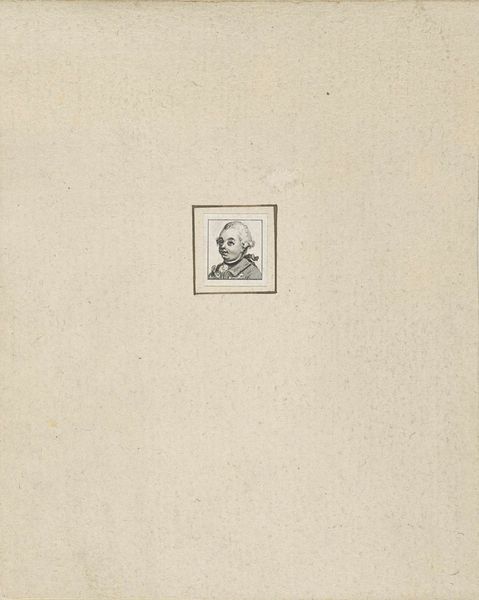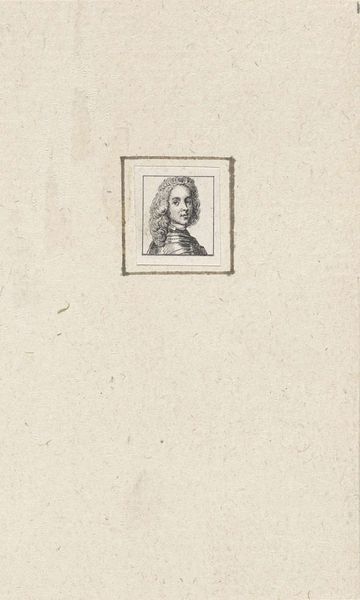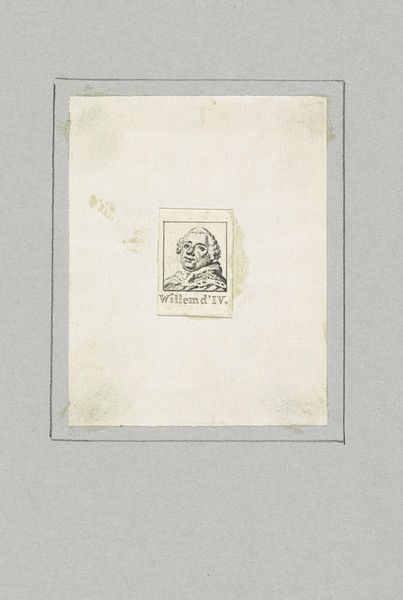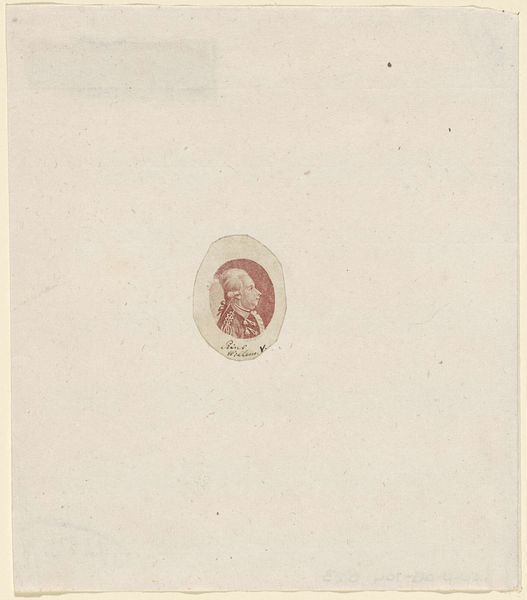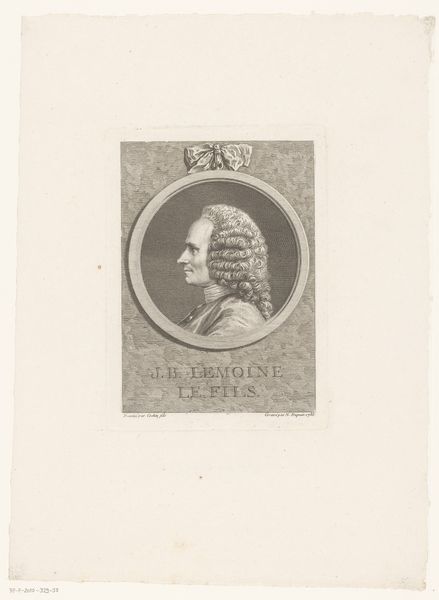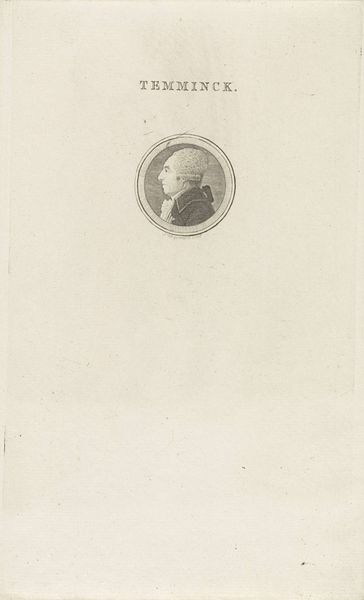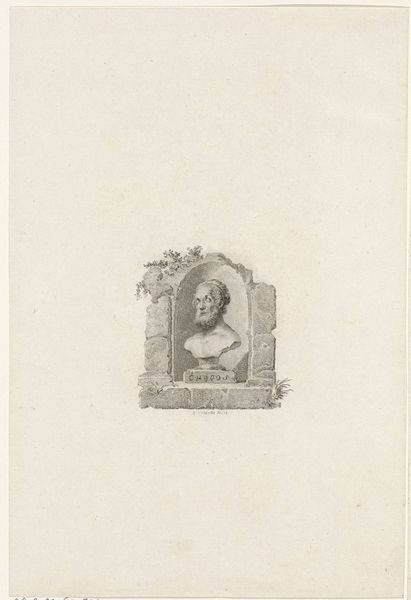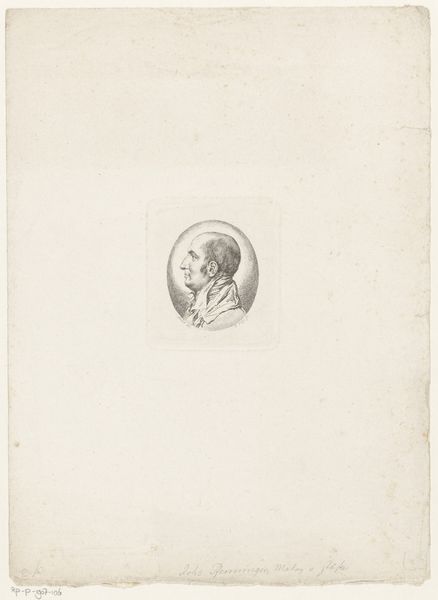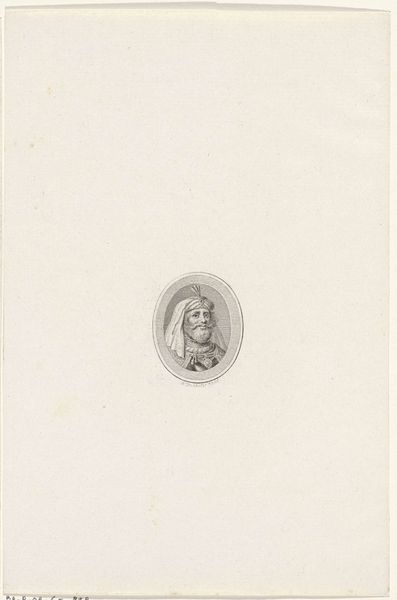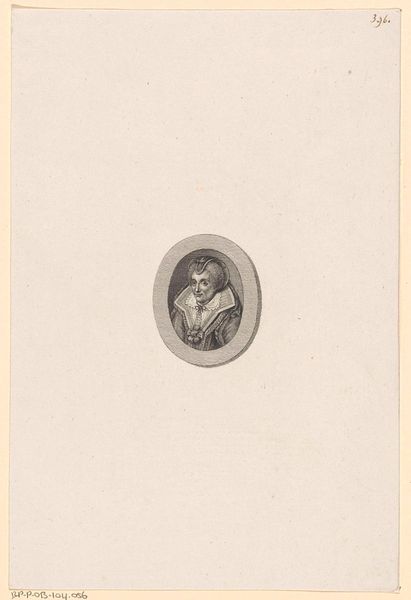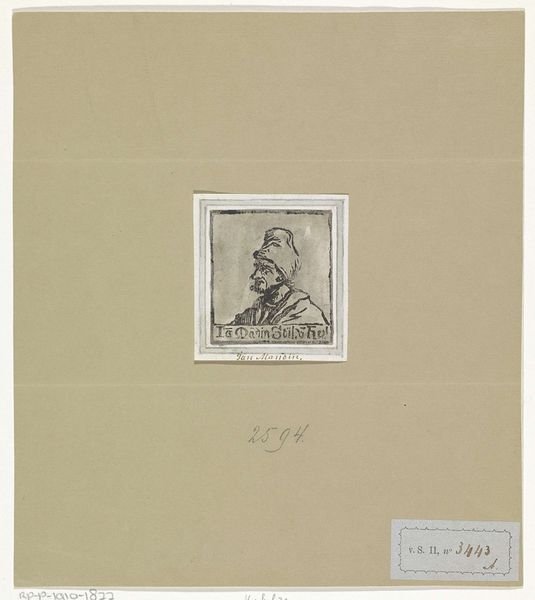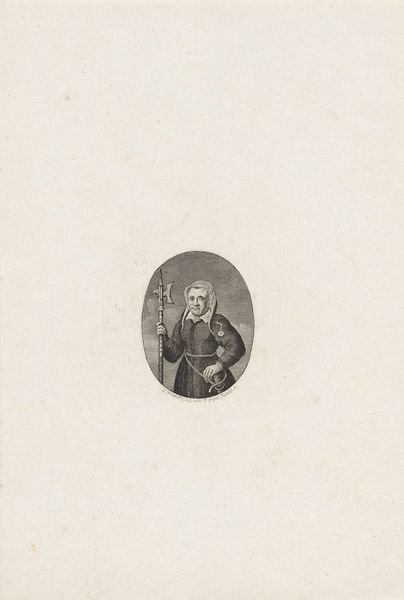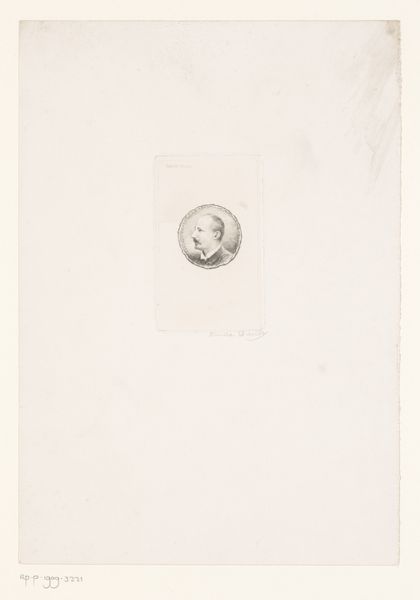
print, engraving
#
neoclacissism
# print
#
old engraving style
#
history-painting
#
engraving
Dimensions: height 23 mm, width 17 mm
Copyright: Rijks Museum: Open Domain
Editor: So, here we have an engraving, "Portret van Willem V, prins van Oranje-Nassau," dating somewhere between 1775 and 1849, and currently residing here at the Rijksmuseum. It's so small! What strikes me most is how much empty space surrounds this tiny portrait. What do you see in this piece? Curator: That negative space is crucial. It isolates Willem V, transforming him into a symbol more than a man. Think about it - engraving allows for reproduction. This image, however small, would have been disseminated widely. Editor: So, it's less about him as an individual and more about what he represents? Curator: Precisely. Willem V, Prince of Orange, carried the weight of a dynasty. This image, printed during a period of political upheaval, recalls the imagery of power. The clean lines and Neoclassical style deliberately evoke Roman ideals of leadership and order during a time of massive change in the Netherlands. Notice anything familiar? Editor: It looks a little like those portraits on currency, actually! Curator: You’re on the right track! In a way, it functions similarly. Think of what cultural memory is being conjured up here with such imagery. How does it play into this particular history? Editor: Hmm, so the print uses familiar imagery to reinforce Willem V’s authority? Curator: Exactly. By using those historical artistic symbols in Neoclassicism, this image reminds viewers of past leaders and reinforces that cultural memory. It’s a statement about permanence, tradition, and perhaps, a longing for stability. Editor: I never considered the symbolic power an engraving could hold! Seeing the layers of meaning embedded in a simple portrait print has changed my whole perspective on this era. Curator: Indeed. Images are rarely just representations; they're often active participants in shaping our understanding of the world and historical events.
Comments
No comments
Be the first to comment and join the conversation on the ultimate creative platform.
